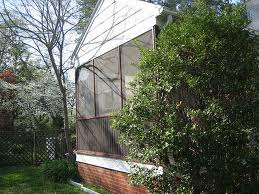How To Make Your Backyard Look Great This Spring

Spring lasts a long time in a yard with evergreens and perennial color. Rocks, gravel, flagstones, and pavers, all define modest paths. Water and lighting offer special effects.
And, brightly colored or earth toned furniture cushions and planters add interest.

But, wood belongs in a garden, and you can use wood finish to make your backyard a place to entertain guests, feed the family, and just plain relax in comfort.
Every garden needs a focal point. It does not have to be in the center, and more often works better off center or in a corner.
If it has open slats or a weave, let it stand as a trellis for a jasmine or climbing rose.
But, before the spring gets away from you, visit your local paint center. Take some lessons on wood finishing. There is no “one-size-fits-all” when it comes to finishing products and techniques.
Now, you do need to go at this with a plan. Staining and adding items at will and whim will only create an unattractive jumble.
Consult with your landscape gardener – if you have one – to help configure the color schemes.
Using non-organic matter to design a garden is called “hardscaping,” and you may want advice on the total picture.
But, you might begin small. For example, update existing lawn and patio furniture with wood finish. Add a market umbrella and upholstery.
Once you have this visual unit in place, build on it visually. Sit removed from the furniture, so you can see it in the context of the rest of the garden space and color.
Then, add an accent at a time. It is still a function of the yard’s size, but too much of anything is a distraction. Stop just short of your planned finish.
License: Creative Commons
image source
Mike has turned many backyards into masterpieces that have always stood the test of time.
